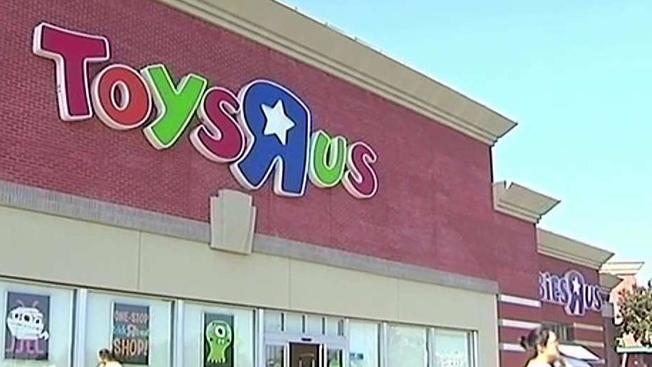Since early last year, commercial real estate investors have been eagerly awaiting the deluge of distressed properties to hit the market. They're still waiting. And chances are, they will be for some time, since property holders are still wary of selling assets into a bad market. So what's an investor to do? Consider funneling your capital into distressed debt. There's no question the opportunities are out there, as the pool of non-performing loans grows ever larger. Though other property sectors may be in more trouble than apartments, it doesn't mean investors looking to make multifamily plays won't have plenty to choose from. In its January report, Trepp reported that the multifamily CMBS delinquency rate rose nearly half a percent to 9.71% (and that's not even counting Tishman Speyer's Stuyvesant Town/Peter Cooper Village deal). And Real Capital Analytics reported that by year-end 2009, there was $22.7 billion in troubled apartment assets in the market. Even exempting those deals that will be worked out or restructured, there will be plenty left over for anyone interested in loan-to-own transactions.
 Though not a new development by any means, investing in distressed debt deals as a way to obtain property is a tactic that's increasingly gaining favor among private equity players. As illustrated in the latest issue of Distressed Assets Investor, there are several ways to execute this strategy, often known as loan-to-own. The purest form is to come into a distressed scenario and either buy the defaulted loan at a discount from the lender or provide the capital to pay it off, effectively becoming the new lender. If the borrower somehow continues to pay on time, the investor gets paid interest fees. If the borrower defaults, the investor gains control of the asset-at a cheaper cost than if it purchased the property outright. The investor can also come in and provide the borrower-which is effectively backed into a corner thanks to the lack of financing in the market-with capital to pay down the debt on the asset, thereby purchasing a stake in the property. Often the new capital comes with caveats. If it's in the form of a loan, it generally has high interest rates, often in the mid-teens. (If the borrower couldn't pay its original loan, what would make anyone think it could pay a more aggressive one? But I guess that's the point, huh?) The borrower defaults and the investor gets the asset. If the investor provides an equity infusion that gives it a partner role in the asset, it can structure the operating agreement in its favor and have a say in how the property is run. If the borrower is able to bring the property to a good level of performance, the investor can either sell its stake to the borrower or a third party for a profit. If the property fails or the borrower cannot hold up its end of the bargain, the investor gets control of the asset. The deed-in-lieu-of-foreclosure option also allows the investor to avoid the legal costs of a foreclosure process. Of course, there are other variations to the strategy and certain nuances-such as the complications investors in securitized loans may face-that investors should consider, but for brevity's sake, I'm not going to get into them here.
Though not a new development by any means, investing in distressed debt deals as a way to obtain property is a tactic that's increasingly gaining favor among private equity players. As illustrated in the latest issue of Distressed Assets Investor, there are several ways to execute this strategy, often known as loan-to-own. The purest form is to come into a distressed scenario and either buy the defaulted loan at a discount from the lender or provide the capital to pay it off, effectively becoming the new lender. If the borrower somehow continues to pay on time, the investor gets paid interest fees. If the borrower defaults, the investor gains control of the asset-at a cheaper cost than if it purchased the property outright. The investor can also come in and provide the borrower-which is effectively backed into a corner thanks to the lack of financing in the market-with capital to pay down the debt on the asset, thereby purchasing a stake in the property. Often the new capital comes with caveats. If it's in the form of a loan, it generally has high interest rates, often in the mid-teens. (If the borrower couldn't pay its original loan, what would make anyone think it could pay a more aggressive one? But I guess that's the point, huh?) The borrower defaults and the investor gets the asset. If the investor provides an equity infusion that gives it a partner role in the asset, it can structure the operating agreement in its favor and have a say in how the property is run. If the borrower is able to bring the property to a good level of performance, the investor can either sell its stake to the borrower or a third party for a profit. If the property fails or the borrower cannot hold up its end of the bargain, the investor gets control of the asset. The deed-in-lieu-of-foreclosure option also allows the investor to avoid the legal costs of a foreclosure process. Of course, there are other variations to the strategy and certain nuances-such as the complications investors in securitized loans may face-that investors should consider, but for brevity's sake, I'm not going to get into them here.
 The term "loan-to-own" is generally considered a dirty word in commercial real estate circles, since it insinuates ulterior motives on the part of the investor. Some of these investors are considered vulture funds, and there have been accusations that loan-to-own players execute these deals with the sole intention of the borrowers going into default, or that the equity partner may coerce the borrower into exiting the deal by making it difficult or unprofitable. That's why those that so use this strategy are generally known as hard-money, asset-based or mezzanine/bridge lenders. A quick Google search brings up hundreds of firms that bill themselves as such-Kennedy Funding, Arbor Commercial Mortgage, Metro Funding Corp., Aries Capital, Greystone Commercial Finance, AREA Property Partners (formerly Apollo Real Estate Advisors) and Cohen Financial, among others. Yet there are some companies that are unabashedly embracing the loan-to-own strategy. Last month, Fifield Realty Partners LLC announced a new $200-million apartment acquisition fund focused on buying core-plus and value-add properties, short-sale deals and loan-to-own acquisitions. The firm and its institutional partners hope to buy as much as $600 million in properties nationally, amounting to more than 5,000 units. Private equity firm AION Partners last year bought the loans on an eight-property portfolio of primarily multifamily assets in six states, valued at more than $110 million. So far, it has foreclosed or taken a deed-in-lieu on five properties, and expects to take over the rest of the assets this year. In an interview with DAI, AION principal Michael Betancourt says the firm looked for loans with shorter maturities. "As a lender, you have control, so we take proactive steps to put pressure on the borrower," he admitted. The properties gained in the deal are the first in what the firm hopes to grow into a larger portfolio; it is eyeing other distressed deals it could take advantage of. And there will be even more opportunities for investors to take advantage of distressed debt as the FDIC sells off the assets of banks it has seized. So, do you think loan-to-own is an effective strategy for multifamily investors looking for a good deal? Or, would the presence of the GSEs, along with the positive view many traditional lenders have of apartments, throw a wrench into these opportunistic players' plans?
The term "loan-to-own" is generally considered a dirty word in commercial real estate circles, since it insinuates ulterior motives on the part of the investor. Some of these investors are considered vulture funds, and there have been accusations that loan-to-own players execute these deals with the sole intention of the borrowers going into default, or that the equity partner may coerce the borrower into exiting the deal by making it difficult or unprofitable. That's why those that so use this strategy are generally known as hard-money, asset-based or mezzanine/bridge lenders. A quick Google search brings up hundreds of firms that bill themselves as such-Kennedy Funding, Arbor Commercial Mortgage, Metro Funding Corp., Aries Capital, Greystone Commercial Finance, AREA Property Partners (formerly Apollo Real Estate Advisors) and Cohen Financial, among others. Yet there are some companies that are unabashedly embracing the loan-to-own strategy. Last month, Fifield Realty Partners LLC announced a new $200-million apartment acquisition fund focused on buying core-plus and value-add properties, short-sale deals and loan-to-own acquisitions. The firm and its institutional partners hope to buy as much as $600 million in properties nationally, amounting to more than 5,000 units. Private equity firm AION Partners last year bought the loans on an eight-property portfolio of primarily multifamily assets in six states, valued at more than $110 million. So far, it has foreclosed or taken a deed-in-lieu on five properties, and expects to take over the rest of the assets this year. In an interview with DAI, AION principal Michael Betancourt says the firm looked for loans with shorter maturities. "As a lender, you have control, so we take proactive steps to put pressure on the borrower," he admitted. The properties gained in the deal are the first in what the firm hopes to grow into a larger portfolio; it is eyeing other distressed deals it could take advantage of. And there will be even more opportunities for investors to take advantage of distressed debt as the FDIC sells off the assets of banks it has seized. So, do you think loan-to-own is an effective strategy for multifamily investors looking for a good deal? Or, would the presence of the GSEs, along with the positive view many traditional lenders have of apartments, throw a wrench into these opportunistic players' plans?
© Touchpoint Markets, All Rights Reserved. Request academic re-use from www.copyright.com. All other uses, submit a request to [email protected]. For more inforrmation visit Asset & Logo Licensing.






